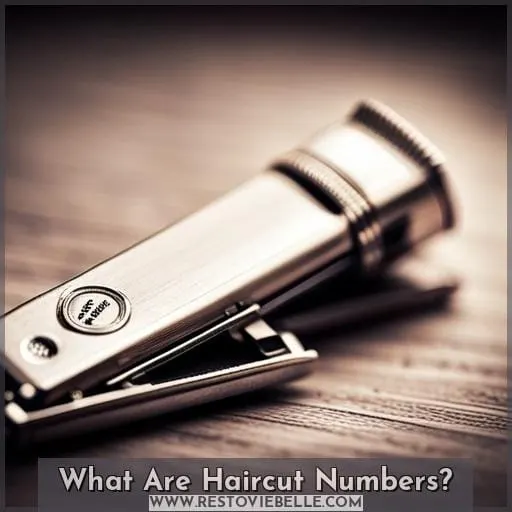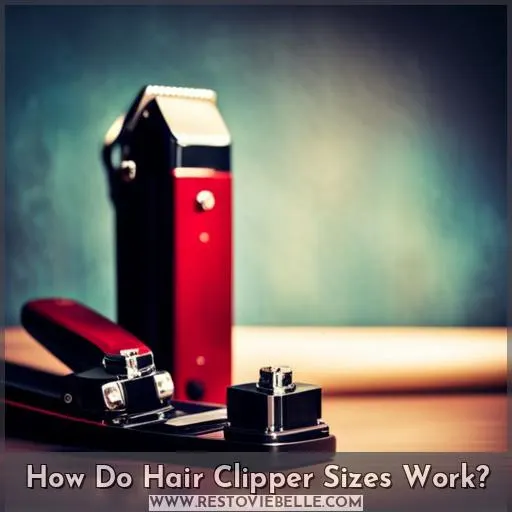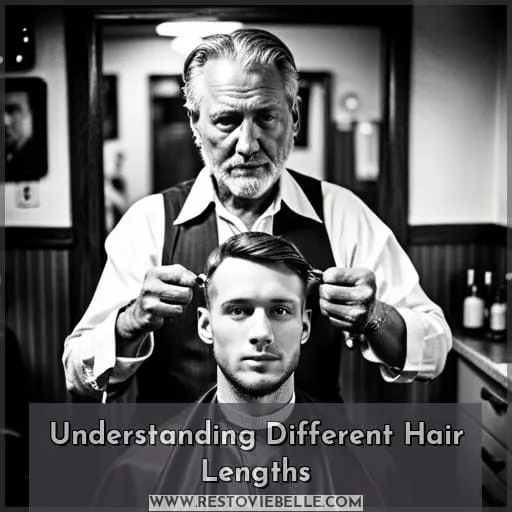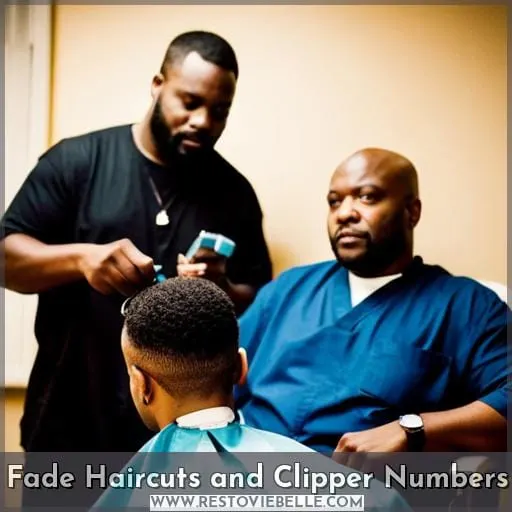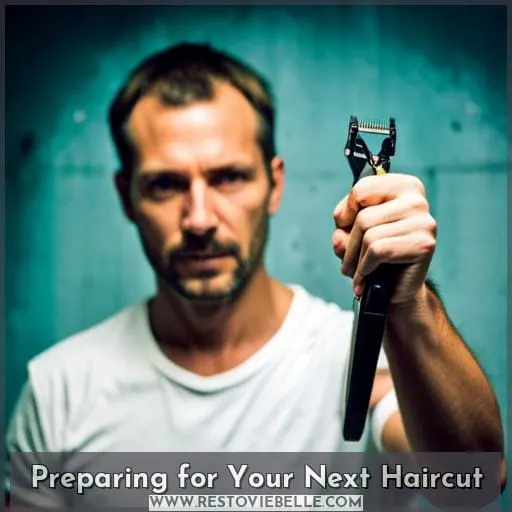This site is supported by our readers. We may earn a commission, at no cost to you, if you purchase through links.
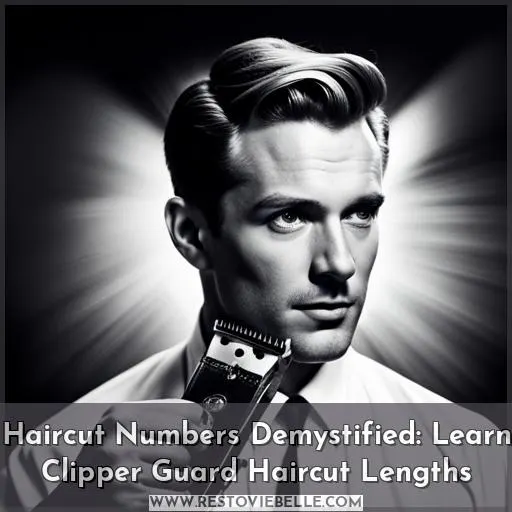 An epic quest for luscious locks starts with knowing your numbers. Arm yourself with clipper guard haircut lengths and you’ll slay any ‘do.
An epic quest for luscious locks starts with knowing your numbers. Arm yourself with clipper guard haircut lengths and you’ll slay any ‘do.
We’ll decode the mystery of sizes so you can belong in the barber’s chair, feeling safety in expertise.
Wield wisdom for whichever crop you seek, be it a buzz, bald, or anywhere between. Let’s unlock the secrets of superb scissor skills with clipper numbers demystified.
Table Of Contents
- Key Takeaways
- What Are Haircut Numbers?
- How Do Hair Clipper Sizes Work?
- Understanding Different Hair Lengths
- Fade Haircuts and Clipper Numbers
- Preparing for Your Next Haircut
- Booking Your Next Appointment
- Frequently Asked Questions (FAQs)
- How often should I get a haircut to maintain my style?
- What hair products or styling tips can help my hair look its best after a cut?
- What face shapes work best with very short haircuts versus longer styles?
- If I want to donate my hair after my next cut, what length does it need to be?
- Are there any tricks to make my hair look thicker or hide thin spots when styling after a cut?
- Conclusion
Key Takeaways
- Short taper fades use clipper guards 1-2, leaving hair near the skin. Medium tapers use guards 3-4, leaving hair 1/2 to 1 inch.
- Start a taper fade with guards 1-2 near the neck and go up in guard size as you move up the head for a blended look.
- Get regular haircuts, use volumizing products, blow dry upwards from damp hair to maintain a taper fade style.
- Face shape should inform taper fade length. Shorter cuts suit longer face shapes.
What Are Haircut Numbers?
When you’re getting your hair cut, you’ll hear the barber refer to numbers that correspond to clipper guard sizes.
These numbers represent the length of hair that will remain after the clippers pass over your head.
The lower numbers leave less hair, while higher numbers leave more.
For example, a #1 guard holds the blades 1/8 inch away, leaving 1/8 inch of hair.
A #2 guard leaves 1/4 inch of hair.
A #3 leaves 3/8 inch.
As the numbers increase, so does the hair length left behind.
Typically, barbers will use different guard numbers when cutting fades or crew cuts, blending the longer top hair with very short sides and back.
Understanding these haircut numbers allows you to better communicate the look you want.
How Do Hair Clipper Sizes Work?
When getting your hair cut, the clipper guard sizes indicate how much hair will remain.
For example,
- A number 1 guard leaves 1/8 inch of hair.
- A number 4 guard leaves 1/2 inch of hair.
As the numbers increase, more hair length is left on your head.
Number 1 Guard
With a number one guard attached, you’d be trimming your hair to an eighth of an inch. This leaves hair quite short with a velvety feel, often used for fades, tapers, and undercuts seeking edgy styles.
Experimenting with a number one guard adds gritty texture perfect for trendy looks. Focus the exposed lengths on the crown or sides to make a statement while enjoying the ease of shortened upkeep.
Number 2 Guard
You’re cutting hair to 1/4 inch when you attach the #2 guard.
With the 2 guard fade, start higher on the sides and taper down to skin, blending the shorter hair into longer hair on top for a smooth look.
The 2 guard taper and lineup add shape, enhancing natural growth patterns.
When using the 2 guard for texture, consider a messy crop or curly fade for versatility.
Number 3 Guard
Your clippers’ number 3 guard leaves 3/8 inch of hair for a nice medium-short cut.
This versatile length pairs well with fades, tapers, and textured styles, complementing various face shapes.
It allows flexibility in styling, from slicked back to side parts, while maintaining professionalism.
Understanding Different Hair Lengths
When getting your hair cut, you’ll need to decide how short or long you want your hair.
Common options are a bald/buzz cut (shortest), a short cut, or a medium cut.
The haircut number and clipper guard size you choose determines the exact hair length that remains.
Bald/Buzz Cut
Having covered hair clipper guard sizes, let’s shift our focus to the scalp—a zero or no guard buzz cut leaves hair shorn close to the skin. This clean look requires no maintenance, gives a professional appearance, and keeps you cool in hot weather.
For best scalp health when opting for a skin fade, use invati menTM scalp revitalizer and aveda’s invati menTM nourishing exfoliating shampoo.
Short Cut
After getting a bald or buzz cut, you’d typically let your hair grow out some before going for a short cut.
- Tapered nape and sides
- Textured top
- Side part
- Faded edges
A short cut with tapered sides and textured top is a classic, low-maintenance style. Ask your barber for a short taper fade to keep things neat and defined. Style with a side part for a polished look.
Medium Cut
You get a half-inch to one-inch of length when asking your barber for a medium cut. This versatile length flatters most face shapes while allowing you to style your hair in various ways – from a textured crop to a side part to a subtle fade.
The medium taper maintains natural volume and flow as your locks graduate down to the nape.
Fade Haircuts and Clipper Numbers
You’ll blend lower clipper numbers for fades.
Start with a #1 or #2 guard on the sides and back, gradually going up to a #3 or #4 guard near the top of the head.
Use the #1 guard to set the baseline near the neck and ears. As you move up the head, switch to the #2, #3, or #4 guards depending on your desired contrast and fade tightness.
Getting the seamless blend takes practice – go slow, frequently check progress, and tweak guards as needed.
Fade haircuts artfully mix shorter clipper numbers on the sides/back with longer lengths up top.
Preparing for Your Next Haircut
Before your next cut, prep your hair properly so you leave with your dream style.
Start by clarifying hair and scalp buildup with a gentle shampoo.
Follow up with a nourishing conditioner, avoiding dry ends.
Let air dry or gently pat dry with a towel.
Next, skip styling products that could prevent your barber from seeing your natural texture and growth patterns.
Finally, arrive at your appointment with clean, product-free hair ready for your barber’s expert consultation.
They’ll assess factors like:
- Hair density and texture
- Natural growth patterns
- Ideal part placement
- Face shape and structure
With a blank slate, your barber can craft a cut that flatters your features.
An aftercare chat will cover choosing shampoos and conditioners to maintain your new look.
With the right at-home products and some TLC, you’ll boost longevity between trims.
Booking Your Next Appointment
Now that you’re informed on haircut numbers, you’ll want to book your next trim at a reputable barbershop that understands clipper lengths.
Find a good barber by asking friends for recommendations or checking online reviews.
When you book your appointment, communicate your desired look using the correct haircut numbers and lengths.
During the consultation, avoid common mistakes like unclear instructions. Specify your desired haircut number for the sides/top and whether you want a fade or taper.
Building a relationship with your barber is key for getting consistent results. Don’t forget to tip them well for quality work and advice.
Following these simple steps will ensure you leave feeling satisfied and confident with your fresh cut.
Frequently Asked Questions (FAQs)
How often should I get a haircut to maintain my style?
Get a haircut every 4-6 weeks to maintain your style.
This allows enough new growth for the barber to recut it properly.
Going too long between cuts means losing shape.
Schedule regular appointments, about a month apart.
Your barber can best advise timing to suit your style and growth rate.
What hair products or styling tips can help my hair look its best after a cut?
Focus on blow drying and using volumizing mousse or sea salt spray after washing.
Apply product to damp hair, then blow dry upwards from roots.
Finish with a matte pomade or light hairspray to lightly style and get a touchable hold that lasts.
What face shapes work best with very short haircuts versus longer styles?
Go for shorter styles with longer or wider face shapes like oval, rectangular, or heart.
Softer face shapes like round or square are lovely with some longer layers around the face.
Focus on balancing your features.
If I want to donate my hair after my next cut, what length does it need to be?
To donate your hair after your next cut, it needs to be at least 10 inches long when styled straight. Any shorter and it can’t be used to make wigs for children fighting medical hair loss.
Check the length before your appointment to ensure you meet this requirement for donation.
Are there any tricks to make my hair look thicker or hide thin spots when styling after a cut?
Yes, use volumizing or texturizing products when styling to add thickness.
Focus application on thinner areas while blow drying using a round brush to lift the roots for volume.
Regular trims also promote healthy hair growth.
Conclusion
Wondering what clipper guards to choose for your next big chop? Armed with the secrets of haircut numbers, you now wield expertise on the perfect blade for any style.
As you step into that barber’s chair, picture the possibilities – will you go short with a #1, keep it medium with a #3, or mix things up with a stylish fade? The numbers have been decoded, freeing you to fearlessly request your ideal ‘do.
What’ll your new look be?
